
Toxicon-X
Scope & Guideline
Advancing Toxicology for a Safer Tomorrow
Introduction
Aims and Scopes
- Toxin Characterization and Mechanism of Action:
Research focusing on the biochemical properties and biological effects of various toxins, including venoms from snakes and scorpions, as well as plant-derived toxins. This area aims to elucidate the mechanisms by which these toxins exert their effects on biological systems. - Antivenom Development and Efficacy:
Studies aimed at evaluating the effectiveness of existing antivenoms and exploring new methods for antivenom development, including the use of monoclonal antibodies and novel therapeutic approaches to neutralize venom effects. - Environmental and Ecological Impact Studies:
Research that examines the ecological factors influencing toxin production and the impact of environmental changes on toxin dynamics, particularly in relation to snake and marine envenomations. - Public Health and Community Engagement:
Investigations into the socio-cultural aspects of snakebite incidents, including healthcare access, community education, and strategies to enhance prevention and care for envenomation. - Toxicological Assessments and Alternatives to Traditional Methods:
Development of alternative testing methods for toxin assessment, such as in vitro assays, to reduce reliance on animal models in toxicity testing.
Trending and Emerging
- Innovative Therapeutic Approaches using Monoclonal Antibodies:
Recent publications have increasingly focused on the development and application of monoclonal antibodies for neutralizing toxins, particularly in snakebite treatment. This trend indicates a shift towards targeted therapies that could enhance treatment outcomes. - Integration of Environmental and Public Health Perspectives:
There is a growing emphasis on the intersection of environmental factors and public health in the context of toxin exposure and snakebite incidents. Research exploring how ecological changes affect toxin dynamics and envenomation rates is becoming more prominent. - Community Health Education and Engagement Strategies:
A notable increase in studies examining the effectiveness of community health education programs and engagement strategies to combat snakebite envenoming reflects a recognition of the importance of local involvement in health interventions. - Advanced Toxicological Testing Methods:
The trend towards using high-throughput screening and other innovative methodologies for assessing toxin effects and antivenom efficacy is gaining momentum, highlighting a shift towards more sophisticated and efficient research techniques. - Cross-Species and Cross-Context Comparisons:
Research comparing venom effects and envenomation outcomes across different species and geographical contexts is emerging as a significant theme, indicating a collaborative approach to understanding toxinology on a global scale.
Declining or Waning
- Traditional Animal Models in Toxicology:
There has been a noticeable decrease in studies relying on traditional animal models for toxicity assessments, as the focus shifts towards more ethical and effective in vitro alternatives. This trend indicates a growing recognition of the need for humane research practices. - General Venom Studies without Specific Applications:
Research that broadly characterizes venoms without a clear application to antivenom development or clinical relevance appears to be waning. The journal is moving towards more applied research that directly addresses public health issues related to envenomation. - Historical Reviews of Venomous Animals:
While reviews are important, there seems to be a reduced emphasis on historical accounts or general overviews of venomous species. The trend is shifting towards specific, data-driven studies that provide actionable insights into the management and treatment of envenomations.
Similar Journals
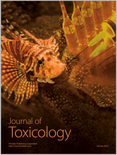
Journal of Toxicology
Empowering global research in toxicological science.Journal of Toxicology, published by HINDAWI LTD, stands as a pivotal open-access journal in the fields of toxicology and pharmacology since its inception in 2009. With an ISSN of 1687-8191 and an E-ISSN of 1687-8205, this journal is dedicated to disseminating high-quality research that critically examines the effects of toxic substances on living organisms. Located in Egypt and operating from their London office, it aims to provide an extensive platform for researchers worldwide to share findings that can inform better practices in safety and regulation. As of 2023, it has achieved significant recognition, holding a Q3 ranking in both the pharmacology and toxicology categories, and is indexed in Scopus with noteworthy percentile rankings (Toxicology: 57th and Pharmacology: 55th). With a focus on innovative studies and emerging areas such as environmental toxicology, biomarker research, and therapeutic interventions, the Journal of Toxicology invites both experienced researchers and students to contribute, thereby enhancing the breadth and depth of toxicological knowledge for the global scientific community.
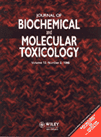
JOURNAL OF BIOCHEMICAL AND MOLECULAR TOXICOLOGY
Advancing the Frontiers of Toxicology and BiochemistryJournal of Biochemical and Molecular Toxicology, published by Wiley, plays a pivotal role in the advancement of knowledge within the fields of biochemistry, toxicology, and molecular biology. Established in 1998, this esteemed journal has garnered a significant reputation, evidenced by its current placement in the Q2 quartile across several categories, including Biochemistry, Health, Toxicology and Mutagenesis, and Medicine. With an ISSN of 1095-6670 and an E-ISSN of 1099-0461, it serves an international audience, offering critical insights and innovative research that shape our understanding of biochemical interactions and toxicological assessments. While it does not operate on an open-access model, the journal ensures rigorous peer review and high-quality publication standards, making it a valuable resource for researchers, professionals, and students dedicated to the exploration of molecular toxicology. The journal's recognized impact within the scientific community is reflected in its competitive rankings among specialized journals, fostering significant contributions to both academic and applied contexts.
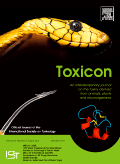
TOXICON
Exploring the Frontiers of Toxicological ResearchTOXICON is a prominent peer-reviewed journal dedicated to advancing the field of toxicology and its related disciplines. Published by PERGAMON-ELSEVIER SCIENCE LTD, this journal has been a crucial resource for researchers since its inception in 1962, with a focus on disseminating high-quality research until 2024 and beyond. TOXICON features comprehensive studies spanning the biochemical, biochemical, and regulatory aspects of toxology, making it essential for researchers, professionals, and students alike. With a current impact factor that places it in the Q3 category of Toxicology and a Scopus rank of 67 out of 133 in its field, it serves as a valuable platform for innovative findings and discussions. Although it does not offer open access options, TOXICON's rigorous editorial standards ensure that published work meets the highest scholarly criteria, thereby enhancing its contribution to toxicological science.

Toxins
Unveiling the science behind toxins for a healthier future.Toxins, published by MDPI, is a leading open-access journal specializing in the field of toxicology, with a strong emphasis on the health implications of toxins across various environments. Established in 2009, this journal has quickly ascended to prominence, attaining a Q1 ranking in both the Health, Toxicology and Mutagenesis and Toxicology categories, underscoring its significant contribution to the scientific community. With an impressive Scopus ranking, placing it within the top percentile of related fields, Toxins serves as a vital resource for researchers, professionals, and students dedicated to advancing knowledge in toxicology and environmental health. The journal encourages the open dissemination of innovative research and critical reviews that explore the mechanisms, effects, and management of toxic substances, thus ensuring that vital research outcomes reach a global audience. For those looking to keep abreast of cutting-edge developments in the field, Toxins is an indispensable platform for scientific exchange and collaboration.

Toxicology Communications
Exploring the impact of toxins on health and environment.Toxicology Communications is a vital academic journal published by Taylor & Francis Ltd, focusing on the critical field of toxicology. Established as an Open Access journal since 2017, it provides researchers, professionals, and students unrestricted access to significant findings in toxicological sciences, promoting global collaboration and knowledge sharing. The journal aims to disseminate innovative research, reviews, and case studies that explore the effects of chemical, biological, and physical agents on human health and the environment. With its commitment to high-quality publications, Toxicology Communications plays an essential role in advancing our understanding of toxicological phenomena and fostering safe practices across various industries. This makes it an invaluable resource for anyone dedicated to the studies of toxins and their environmental and health implications.

Journal of Immunotoxicology
Connecting Knowledge to Impact Human HealthJournal of Immunotoxicology, published by Taylor & Francis Ltd, is at the forefront of research in the intersecting fields of immunology and toxicology. With an annual impact factor that reflects its growing influence, this Open Access journal has been essential for disseminating valuable knowledge since its inception in 2004. The journal welcomes novel research articles, reviews, and commentary that explore the effects of xenobiotics on the immune system, contributing to a deeper understanding of immunotoxicological mechanisms and implications for human health. As a recognized platform, it has achieved commendable rankings in Scopus, positioning it within Q3 in Immunology and Q2 in Toxicology categories as of 2023. This ensures that the journal remains a critical resource for researchers, professionals, and students seeking to advance their knowledge and contribute to the evolving landscape of immunotoxicology. With an Open Access model since 2017, it maximizes accessibility and reaches a global audience, supporting the collaborative efforts needed to address contemporary challenges in health and safety.
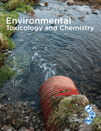
ENVIRONMENTAL TOXICOLOGY AND CHEMISTRY
Illuminating the pathways of toxins in our world.ENVIRONMENTAL TOXICOLOGY AND CHEMISTRY is a premier journal published by Wiley that has established itself as an essential resource for researchers, professionals, and students in the fields of environmental chemistry and toxicology. With a robust trajectory since its inception in 1982, the journal offers critical insights into the interactions between environmental pollutants and biological systems, aiming to advance our understanding of the impacts of toxins on health and ecosystems. Recognized in the top quartile (Q1) of both Environmental Chemistry and Health, Toxicology, and Mutagenesis categories as of 2023, the journal is respected for its rigorous peer-reviewed content and high impact factor. It ranks 33rd out of 148 in Health, Toxicology and Mutagenesis and 48th out of 147 in Environmental Chemistry according to Scopus metrics, placing it firmly within the most influential publications in these fields. Although it does not currently offer open access, the journal remains a vital conduit for disseminating cutting-edge research and innovative methodologies that address pressing environmental challenges.
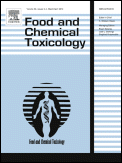
FOOD AND CHEMICAL TOXICOLOGY
Bridging disciplines for a healthier tomorrow.FOOD AND CHEMICAL TOXICOLOGY, published by Pergamon-Elsevier Science Ltd, is a prestigious journal with a significant impact in the fields of food science, medicine, and toxicology, reflecting its Q1 and Q2 quartile rankings in various categories as of 2023. Established in 1982, this journal continues to serve as an essential platform for disseminating high-quality research focused on the toxicological assessment of foods and chemicals, aiming to advance knowledge that affects public health and safety. With a pivotal role in integrating diverse disciplines, including pharmacology and agricultural sciences, the journal ranks impressively within the top percentiles—specifically 95th in Toxicology and 92nd in Food Science on the Scopus metrics. Though it operates on a traditional subscription model, the journal is committed to providing valuable insights and findings to researchers, professionals, and students across the globe, making it a vital resource in the ongoing discourse around food safety and environmental health. Its comprehensive scope underscores its importance in shaping evidence-based policies and practices.

Journal of Environmental Science and Health Part C-Toxicology and Carcinogenesis
Pioneering Research for a Healthier TomorrowThe Journal of Environmental Science and Health Part C-Toxicology and Carcinogenesis is a vital publication in the fields of environmental science, toxicology, and cancer research, published by Taylor & Francis Inc. With an ISSN of 2689-6583 and E-ISSN 2689-6591, this journal provides a platform for peer-reviewed research that explores the intersection of environmental factors and health outcomes, particularly focusing on toxicological and carcinogenic impacts. Though it does not currently offer Open Access, it remains a significant contributor to academia with its current ranking in the Q4 category for Cancer Research and Q3 in Health, Toxicology and Mutagenesis. The journal has converged from 2020 to 2024 and aims to disseminate pioneering studies that inform public health policies and foster a deeper understanding of environmental toxins. Aspiring researchers, professionals, and students will find this journal to be an essential resource for the latest findings and discussions within these critical fields.
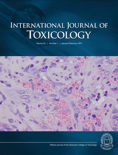
INTERNATIONAL JOURNAL OF TOXICOLOGY
Illuminating the Pathways of Toxicology Research since 1982.The International Journal of Toxicology, published by SAGE Publications Inc, serves as a cornerstone of scholarly research in the field of toxicology, with an established history dating back to 1982. This esteemed journal, ISSN 1091-5818 and E-ISSN 1092-874X, functions within the Q3 quartile in Toxicology, ranking 94 out of 133 in the Pharmacology, Toxicology and Pharmaceutics category per Scopus metrics, reflecting its commitment to advancing scientific understanding in this critical area. The journal not only aims to disseminate high-quality research but also encourages open access to vital studies, thus fostering collaboration and innovation among researchers, professionals, and students alike. With a focus on various aspects of toxicology, including but not limited to environmental, clinical, and molecular toxicology, the International Journal of Toxicology is dedicated to bridging gaps in toxicity research and promoting safe practices across numerous disciplines. As it converges towards 2024, the journal continues to play a vital role in shaping the discourse surrounding the implications of exposure to toxic substances in human health and the environment.